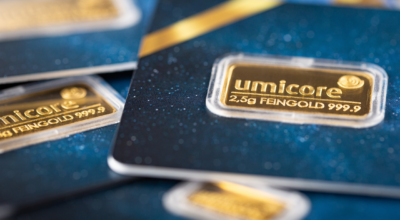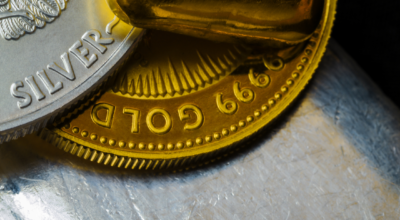Gold, Silver and Monetary Stability
- ZeroHedge: SVB Lessons: If you can’t hold it, it’s not really yours
- Kitco: Gold is the only true measure of value in our growing multipolar world
- IMF: Gold, silver and monetary stability
SVB lessons: If you can’t hold it, it’s not really yours
The failure of Silicon Valley Bank and Signature Bank reminds us of a very important truth — if you can’t hold it in your hand, you don’t really own it, writes ZeroHedge. That’s why it’s wise to hold at least some of your wealth in hard assets like gold and silver that are in your direct possession or at least stored in a secure, allocated, segregated, and insured storage facility.
Depositors at SVB and Signature Bank lucked out. The government has made provisions to cover uninsured deposits. And during its crisis, the Greek government shuttered banks and seized some bank deposits. Most people assume “that can’t happen” in the US. But as we saw over last week, the US banking system is vulnerable to collapse.
According to ZeroHedge, the dirty little secret is that US banks don’t hold customers’ money in their vaults. They loan it out to other people. In the US fractional reserve banking system, financial institutions only have enough cash on hand to cover a fraction of their deposits. If too many people show up at the bank to demand their money at the same time, the bank will not have enough funds available to cover all of the withdrawals.
Gold and silver carry no counterparty risk. They are tangible assets that you can hold in your hand. They can be bought and sold all over the world. Their value is recognized globally. While the price of gold or silver may fall, it will never fall to zero. Precious metals can’t default on their payments, they can’t commit fraud, and they can’t go bankrupt.
Gold is the only true measure of value in the growing multipolar world
Gold may not fit the classic definition as a critical metal as only around 7% of global demand is used in industrial applications; however, according to one market analyst, it plays an essential role in society and financial markets. In an interview with Kitco News, Byron King, precious metals expert at Agora Financial, said that the era of rampant government spending and low interest rates has ruined the value of fiat currencies worldwide.
He added that the world is now feeling the effects of more than a decade of loose monetary policies as inflation remains stubbornly high. While inflation has been a significant drag on consumers as their purchasing power weakens, King said the problem is much bigger than just higher costs.
“If you can’t get inflation under control, you lose the ability to plan for the future. “Maybe 50% of global trade is settled with U.S. dollar, and maybe 25% is in yuan and maybe 10% in euros and the rest in seashells or something,” he said. “When everything is eventually settled up, gold might be the means by which they do the settling up.”
King said that investors and consumers can already see the start of a multipolar currency market as China continues to buy gold. Updated data from the People’s Bank of China showed that it bought 24.9 tonnes of gold in February, its fourth consecutive month of purchase. King said that he suspects the Chinese government holds a lot more gold than is reported in the official numbers. He noted that China is the world’s biggest gold producer and many mines are run by state-run companies.
The green energy transition demand for critical metals and waning globalization are two significant trends that will drive consumer prices higher, King said. He added that in this environment, there is little central banks, led by the Federal Reserve, can do that will cool inflation. According to King, if the Federal Reserve really wanted to cool down the economy, it would have to take interest rates to at least 10%.
Gold, silver and monetary stability
International Monetary Fund’s (IMF) Johannes Wiegand writes about a historical episode related to the global monetary system.
Year 1873 marked a turning point of the monetary history. In July, the Reichstag of the newly established German Empire replaced an array of silver-based currencies with the gold mark. In September, the Paris mint limited silver coinage, ending the double gold-silver monetary standard France had maintained for decades.
Global bimetallism
Nineteenth century currency systems operated very differently from today’s monetary system. Money was tied to precious metals. Coins were minted from bullion, and paper money could be exchanged for bullion at guaranteed exchange values.
In the early 19th century, most countries tied their currencies to silver—except the UK and, beginning in the mid-1830s, the US, which were on gold.
Gresham’s law
“Gresham’s law” states that, in fixed exchange rate systems, «bad money drives out good.» In the case of bimetallism, it worked as follows: the mint fixed the relative price of two currency metals. If the supply of one metal increased—for example, because of new discoveries or currency reforms that demonetized that metal—its market price would tend to fall, generating an incentive to bring bullion to the mint and convert it into specie to take advantage of the price guarantee. Conversely, the other, now scarcer, metal would be withdrawn from circulation.
Bimetallism in the 1860s
Given these strains, how did bimetallism survive the 1860s? In 1867, Emperor Napoleon III hosted an international monetary conference in Paris to seek alternatives. It issued a nonbinding recommendation for a global currency system based on gold. France itself seemed to be leading the world away from bimetallism.
Making a recommendation was one thing; however, implementing it was another—not least for France itself. Moving to gold required getting rid of France’s silver coins.
Germany’s reform
The setting changed fundamentally in 1870. A Prussia-led German coalition won the Franco-Prussian war, triggering Napoleon III’s downfall, the emergence of the Third Republic, and the formation of the German Empire. Prussian troops occupied Paris and would withdraw only once France paid a large indemnity, which was payable in silver, among other things. France could not abandon bimetallism now, as demonetizing silver would undermine its capacity to pay and regain sovereignty.
This meant policymakers in Berlin had free rein to pursue currency reform—but only until France settled the indemnity.
Breaking bimetallism
On September 5, 1873, France settled the indemnity’s last instalment—two bond issuances of hitherto unknown volume had allowed much earlier payment than originally anticipated. The next day the Paris mint limited silver coinage, and therefore broke the bimetallic bond.
This move was unexpected. France could have sustained bimetallism even after the German, Dutch, and Scandinavian currency reforms if it had accepted a higher share of silver coins. Why then expose itself and the world to monetary instability? The measure appears so self-destructive that Flandreau suspected revanchism as the motive.
Aftermath and lessons learnt
It is almost forgotten that the gold standard’s early years were rough. In the new gold bloc, persistent deflation drove up real interest rates that weighed on profits and investment. Distributional conflicts between debtors and creditors erupted and poisoned the political atmosphere. It soon dawned on the public that the monetary decisions of the early 1870s had something to do with this. Bimetallism operated smoothly as long as the financial environment was stable and only one country—France—needed to sustain it.
If you’re considering investing in gold and silver, Jalonom offers a variety of products and services, providing a convenient and secure method to acquire these valuable assets.
Image: IMF






